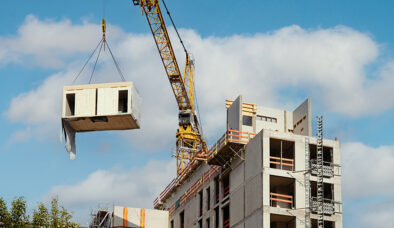SMT and SMA Designations
The most common question I have heard over the years comes from building engineers asking, “What is the benefit of having my Systems Maintenance Administrator (SMA) and Systems Maintenance Technician (SMT) designations?” I earned my SMT and SMA designations over 20 years ago. Surely they must have helped me in some way, right?
One of my all-time favorite quotes is, “Do not go where the path may lead, go instead where there is no path and leave a trail.” If you want to set yourself apart, don’t take the same old worn path that others are taking. Rather, create your own path and make sure that you leave a good impression along the way.
In order to fully appreciate the benefits of my SMT/SMA designation, one has to go back to a time before the Internet and well before cell phones and other personal electronic devices were commonly used in the industry. A time when two-way radios—which were then dubbed “the brick”—and alpha-numeric pagers were the primary communication tools of the trade. The year was 1991 and after three years as a building engineer, my career was feeling stagnant. It became apparent that I needed to obtain something that could set me apart; something that could help me differentiate my skill set from other engineers in the trade.
I began researching educational opportunities that could help me do just that. Among those opportunities was the SMT/SMA designation program, offered through Building Owners and Managers Institute (BOMI) International. I decided to start taking the courses at the same time I was taking the Air Conditioning Technology program courses at a local technical college. The technical school focused primarily on heating, refrigeration and electrical theory along with troubleshooting procedures. It was also primarily for residential systems and it did not spend very much time on commercial applications.
This made the SMT/SMA courses even more attractive to me, because I knew they focused mainly on commercial office buildings, which was exactly what I needed. To my surprise, my employer even paid for me to take these BOMI courses as long as I passed the exam at the end of each course. After all, completing these courses is supposed to make me a more versatile employee.
Obtaining my SMT and SMA designations made me much more cognizant of saving money for my building owners. Sure, I knew how to replace a light bulb or ballast in my sleep, but I really needed to gain some type of knowledge that could actually have an impact on my building operating costs. The Energy Management and Controls course provided me with a matrix on how to improve my energy management practices, which I was able to take back to my building and start implementing right away. Some of these energy saving practices were noticeable on the next couple of utility bills, including electric and natural gas.
The Air Handling, Water Treatment and Plumbing Systems course benefited me in a few different ways. Most importantly, it provided me with a much better understanding of water treatment programs and the reasons why I was testing and logging the chemical levels of our condenser water, chilled water and boiler water at regular frequencies. It also enhanced my knowledge of indoor air quality (IAQ) and some of the proactive practices that can help maintain proper IAQ.
Not only was I able to take these practices back to my building and start implementing them almost right away, I was also able to conduct my own IAQ analysis of the building and determine what changes were needed in order to ensure that I maintained better IAQ going forward.
The Building Design and Maintenance course was another course that was extremely helpful to me. In order to provide more value to my employer, it really made good sense to become more familiar with landscaping, as well as building cleaning equipment and procedures. While I did not manage these specific departments, being knowledgeable in these fields would make it easier for me to work alongside our landscaping and cleaning contractors on a daily basis and to better understand how they operate.
I have only briefly touched on a few of the benefits of earning an SMT or SMA designation, but there are actually many more. I was so impressed by this program that six years ago, I decided to become an instructor for some of these courses. I wanted to help as many junior engineers as possible better understand the ins and outs of our industry. The SMT/SMA program is one of the best ways to accomplish this.
There are approximately 147 SMT and 103 SMA designation holders here in Georgia—note that achieving your SMT is a prerequisite for obtaining your SMA designation. Considering that Georgia has a population of nearly 10 million people, and that Atlanta is the ninth largest metropolitan area in the United States at a population of 5.45 million, these are actually low numbers. There are more than 133 million square feet of commercial Class A and Class B office space in the Atlanta metro area that must be maintained on a daily basis.
So my question to all building engineers interested in advancing their careers is: “What is holding you back from earning your SMT or SMA designation?”









